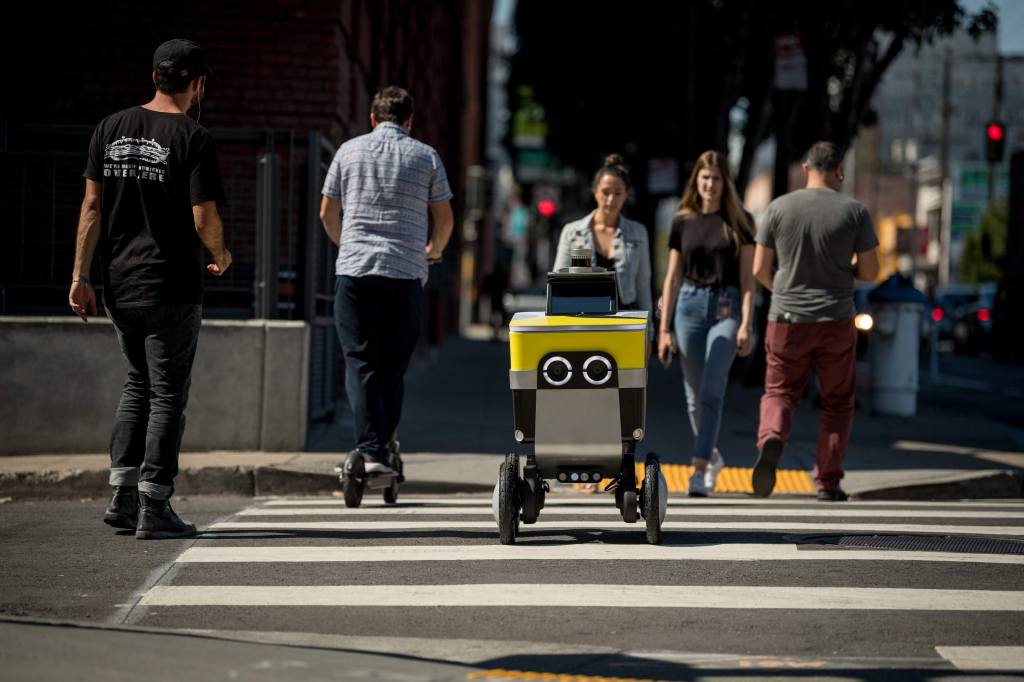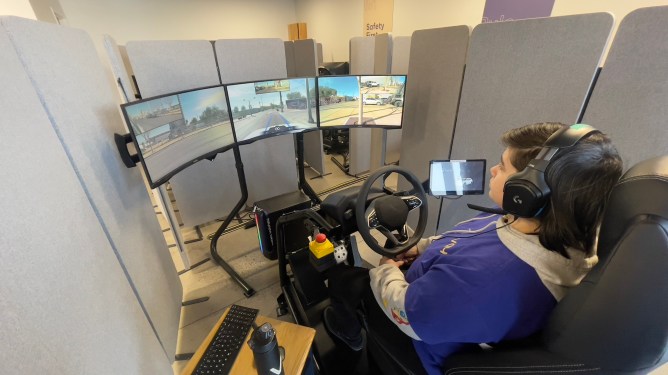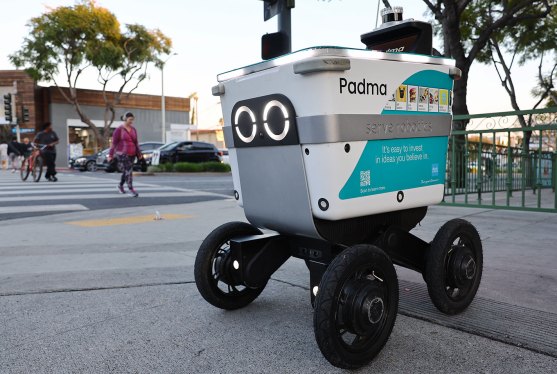Serve Robotics, the autonomous sidewalk delivery company that spun out from Uber-owned Postmates in March, has closed an expanded seed round at $13 million. The company will use the funds to accelerate its expansion plans into new customer segments and geographic areas, which will require them to build more sidewalk robots to fuel that growth.
“Our goal is to put robots in every major U.S. city in the next two to three years,” Ali Kashani, co-founder and CEO of Serve, told TechCrunch.
Uber participated in the round as a strategic investor, alongside Delivery Hero-backed DX Ventures, 7-Eleven’s corporate venture arm 7-Ventures and Wavemaker Partners’ food automation-focused venture studio Wavemaker Labs. This round extends Serve’s previous seed funding from March and includes participation from existing investors like VC firms Neo and Western Technology Investment, as well as entrepreneur and angel investor Scott Banister.
Serve has been delivering to Postmates customers in multiple Los Angeles neighborhoods since 2018, when the startup was still “Postmates X”, the robotics division of the delivery platform. It started a commercial service in 2020 and its robots have completed tens of thousands of contactless deliveries from over 100 merchants in LA and San Francisco, according to the company. In November, Serve said it would be offering its on-demand robotic delivery service to Uber Eats customers in LA early next year.
Kashani said it made sense to bring on new strategic investors in advance of its Series A round, and these investors provide a hint of what’s to come for the startup next year.
“We’re expanding beyond Uber Eats customers and Postmates customers, and we are going to increase the number of neighborhoods that we’re operating in LA next year, as well as going to new cities,” said Kashani. “7-Eleven and Delivery Hero have now invested into the company so hopefully we will share more about any collaborations that develop. There are a number of other partners that we are in discussions with right now whenever we are ready to share.”
Convenience store giant 7-Eleven is no stranger to autonomous delivery. The company recently began a small commercial delivery pilot with Nuro using the company’s autonomous vehicles. The operator of 7-Eleven stores in Korea also began testing sidewalk delivery robots developed by local startup Neubility, and in 2016, 7-Eleven tested autonomous delivery in Reno, Nevada with drone company Flirtey. Delivery Hero has also experimented with sidewalk robots in the past, enlisting Starship Technologies in 2018 to serve delivery company Foodora’s customers.
“Serve Robotics has brought self-driving delivery to major U.S. cities and is leading the field of robotics with its cutting-edge autonomous technology,” said Brendon Blacker, partner at DX Ventures, in a statement. “This game-changing technology has the potential to reshape the future of delivery and we are investing in Ali’s vision and the world-class team he has assembled.”
Kashani said aside from the closing of its seed round, Serve has some upcoming news about advancements in its autonomy, but wouldn’t go into specifics. While some companies, like competitor Coco, which just signed a deal with Segway to use the manufacturer’s robotics platform for its future vehicles, often tout the importance of having a human in the loop for autonomy, Serve aims to remove remote pilots from the equation as much as possible.
“Our robots can operate independently in autonomous mode most of the time,” said Kashani. “This has very important implications for safety and economics of our operation, and is part of the reason we are able to commercially operate our fleet.”
If you have humans in the loop, the economics just won’t work, even if the remote operators are offshore, says Kashani. However, he admitted, relying on humans only doesn’t make sense if it’s a one-to-one relationship, as in, one person monitoring one robot at a time. As with Coco, the question with Serve then becomes, how can we improve our autonomy to the point that we can have multiple robots on the streets being supervised by one human at a time?
“Robots need to have onboard capability to keep themselves safe when the network drops or when someone is about to make a mistake,” said Kashani. “We want people to watch the robots when they’re doing things like crossing the street, just because, from a safety point of view, this is when they’re interacting with cars. Sometimes the humans take over if the robot can’t figure it out, sometimes they don’t. Usually the robot makes an attempt to figure situations out by itself and then if it can’t, a person can step in, but part of it is because of the time it takes. You don’t want to wait if you’re on a timeline.”
Sidewalk robot delivery is just starting to heat up as an industry, and with it will be a race among companies to come up with the most sophisticated technology and the best go-to-market strategy. With this round of funding, and its accompanying partners, Serve is already prepping for scale.
“7-Eleven represents convenience stores we could work with, Delivery Hero gives you a sense of delivery platforms we could work with,” Aduke Thelwell, head of communications at Serve, told TechCrunch. “We’re certainly going to engage with restaurant chains and over time, there’s medical delivery, pharmacy, alcohol, cannabis, et cetera. So it is the gamut that you’d expect we’re going after in terms of partnerships.”





